Special Report
The Most Eco-Friendly States in America
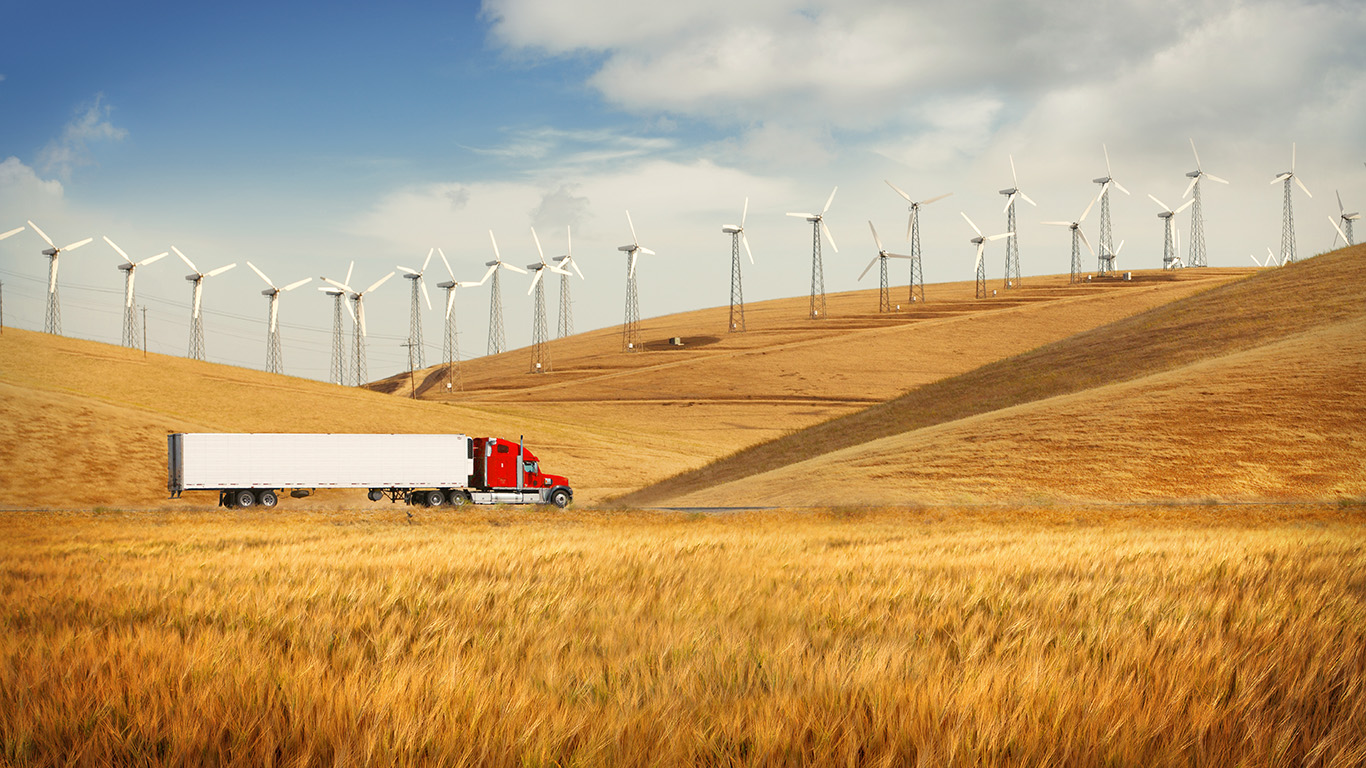
Published:
Last Updated:

Earth Day is celebrated on April 22, and those who celebrate it this year will do so in light of the increasingly grim news surrounding global climate change. Even some of the more conservative climate models predict dire consequences should global efforts to reduce greenhouse gas emissions fail to improve. While some parts of the world have made aggressive commitments to reduce emissions, the United States — the world’s second largest greenhouse gas emitter — has fallen behind most affluent countries in efforts to reduce emissions.
Some states, however, are actually very eco-friendly compared to the rest of the country. While the United States announced in 2017 its plans to back out of the Paris Climate Agreement, many state governments have set their own goals to reduce emissions in line with the international agreement.
The burning of fossil fuels is one of the primary causes not just of greenhouse gas emissions, but also of other forms of air pollution and environmental harm. While some U.S. states generate over 90% of electricity by burning coal, oil, or natural gas, others have a largely green electricity generation profile. In Vermont, for example, 99.6% of electricity generated comes from alternative sources.
Eco-friendly states enact more aggressive local restrictions on energy use for its businesses and transportation systems, use more renewable energy sources and less fossil fuels, and generally have less pollution. 24/7 Wall St. created an index of air pollution levels, state energy generation and efficiency policy, and employment in green jobs to identify the 16 most eco-friendly states.
Click here to read about the most eco-friendly states in America.
Click here to read about our methodology.
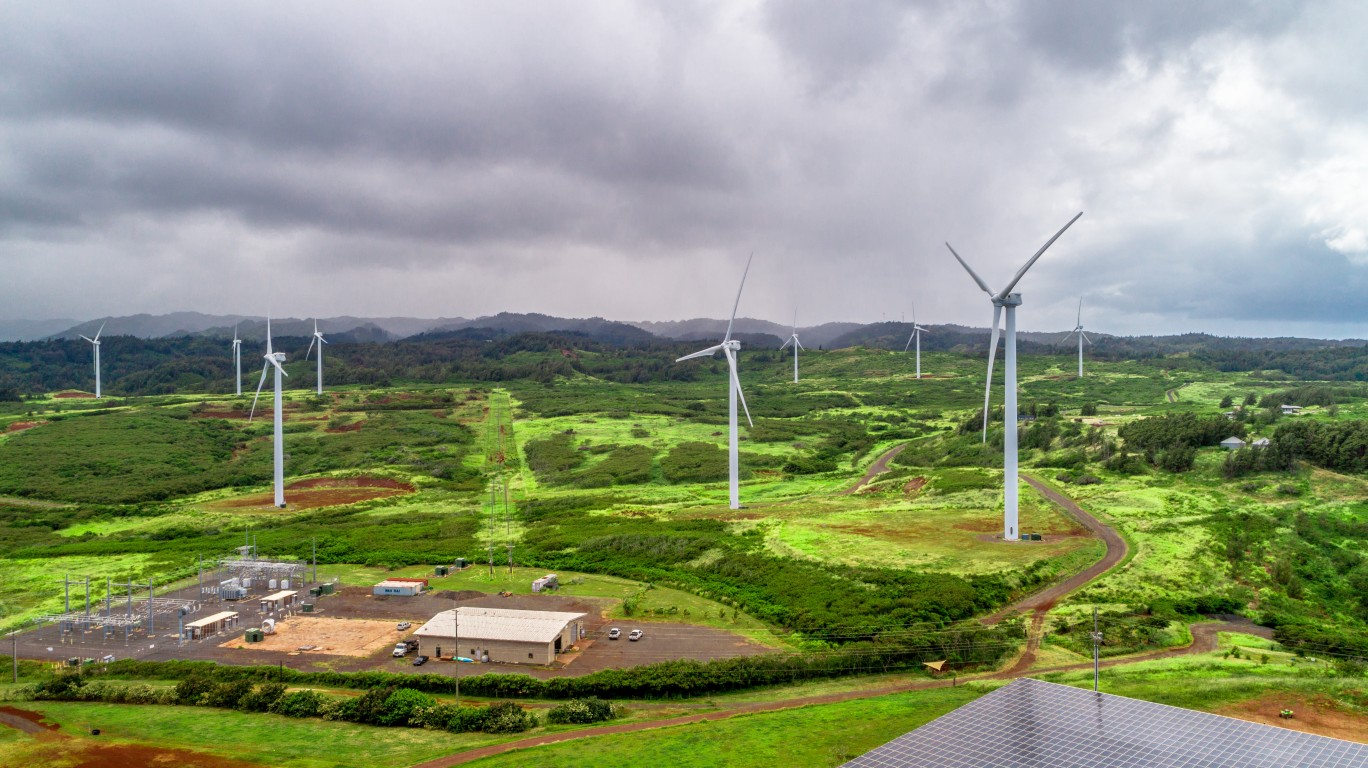
16. Hawaii
> Energy generated from renewable sources: 14.1% (22nd highest)
> Energy generated from fossil fuels: 81.6% (13th highest)
> Green industry employment: 15.8% (10th lowest)
> Avg. daily particle pollution: 0.0 ug/m3 (the lowest)
The air in Hawaii is very clean. The Aloha State has, on average, the lowest concentration of harmful fine particulate matter per cubic meter among states. The state legislature’s current goal is for 100% of the state’s energy to come from renewable sources by 2045. Already, there are days in Hawaii when 60% of all electricity is generated by renewable sources.
Hawaii has a major state financial incentive for energy sufficiency — the Green Energy Market Securitization financing program. The program provides people with products that result in electricity bill savings.
[in-text-ad]
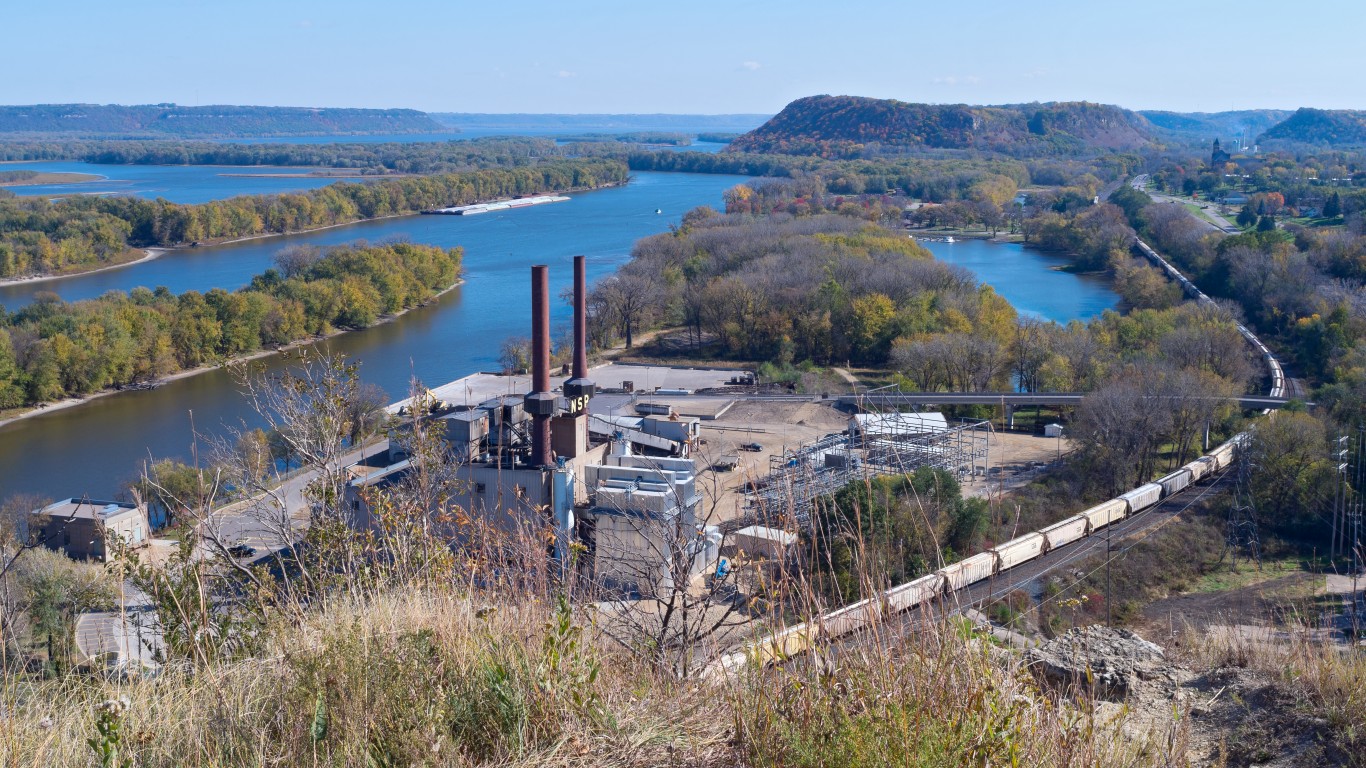
15. Minnesota
> Energy generated from renewable sources: 25.4% (15th highest)
> Energy generated from fossil fuels: 50.3% (16th lowest)
> Green industry employment: 17.7% (20th highest)
> Avg. daily particle pollution: 10.5 ug/m3 (8th highest)
Minnesota has made great strides in reducing its reliance on coal in recent years. Coal-fired power plants accounted for 39% of utility-scale electricity generation in the state in 2017, a considerable improvement from 49% as recently as 2014. As of 2017, 19% of electricity produced in the state was wind generated, a larger share than in all but six other states. Overall, renewable energy sources like biomass, wind, and hydroelectricity account for over a quarter of all energy produced in the state.
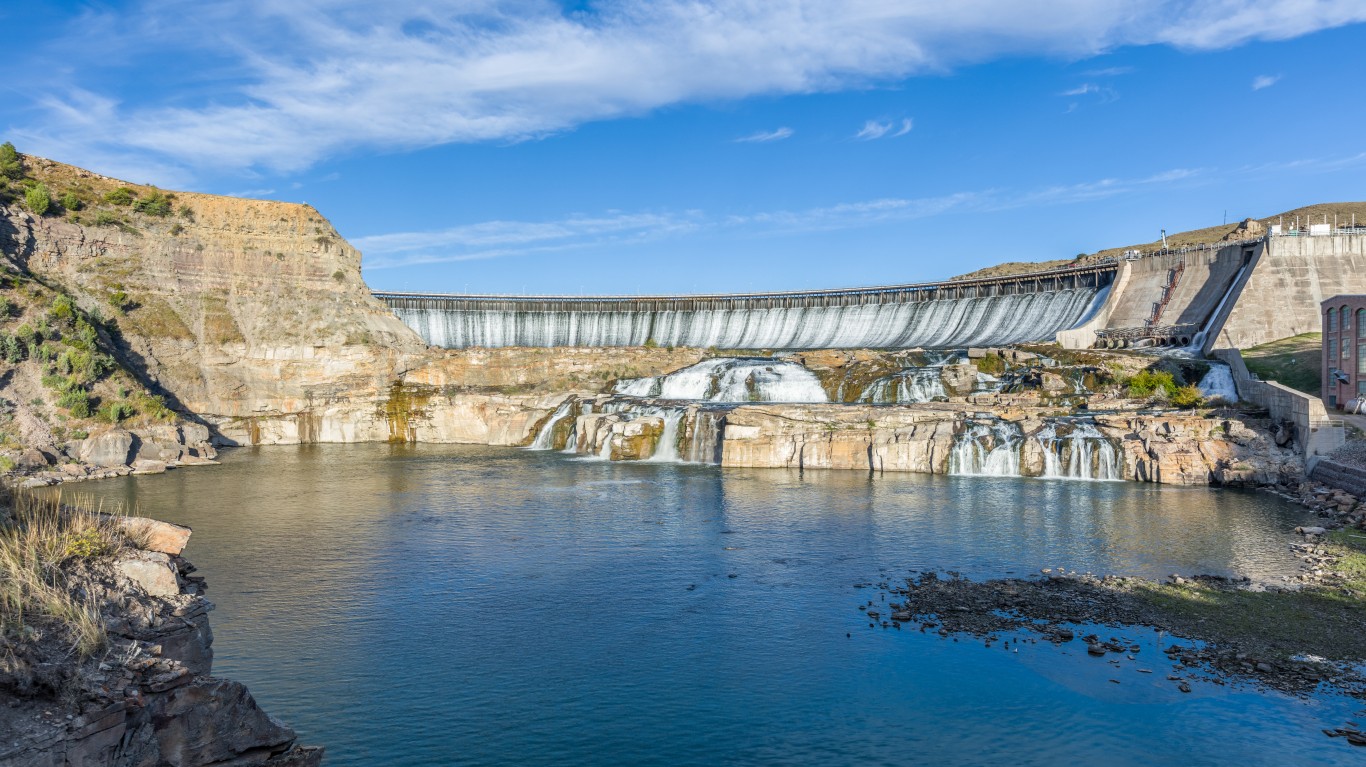
14. Montana
> Energy generated from renewable sources: 46.5% (8th highest)
> Energy generated from fossil fuels: 52.2% (19th lowest)
> Green industry employment: 17.8% (18th highest)
> Avg. daily particle pollution: 6.8 ug/m3 (4th lowest)
Montana has some of the cleanest air in the country — it has the fourth lowest concentration of harmful particulate matter per cubic meter among states. The low concentration of particulate matter is partially the result of the state’s increased reliance on clean energy. Nearly half of all electricity generated in the state comes from renewable sources — compared to just 17% of energy production nationwide. Most renewable energy in the state is either hydroelectric or wind generated.
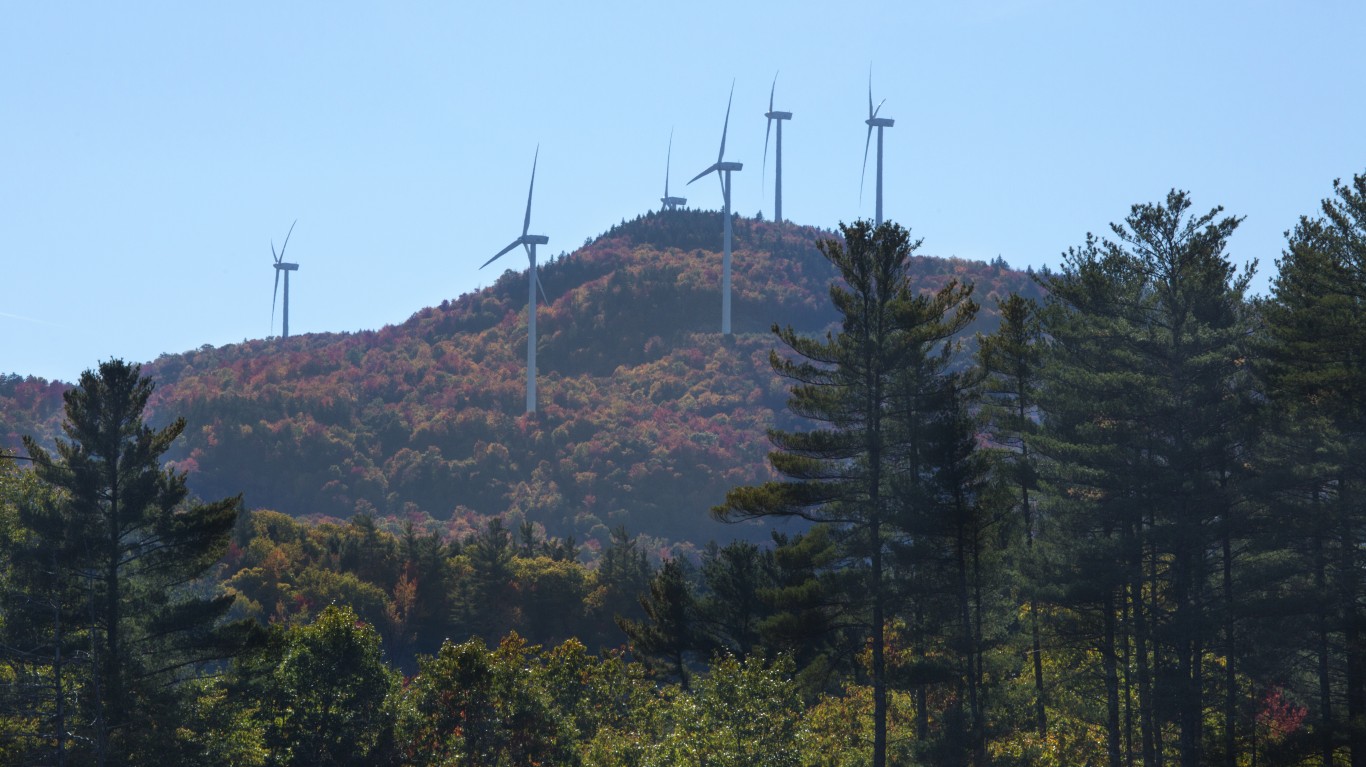
13. New Hampshire
> Energy generated from renewable sources: 19.7% (18th highest)
> Energy generated from fossil fuels: 22.8% (5th lowest)
> Green industry employment: 17.0% (21st lowest)
> Avg. daily particle pollution: 8.3 ug/m3 (14th lowest)
New Hampshire generates 22.8% of its electricity from fossil fuels, the fifth lowest share of all states. In comparison, all but seven states generate more than 38.0% of their electricity from oil, coal, or natural gas.
The state has incorporated several renewable energy incentives, one of which is a property tax exemption for certain installations such as solar panels, wind turbines, and central wood-fired heating systems.
[in-text-ad-2]
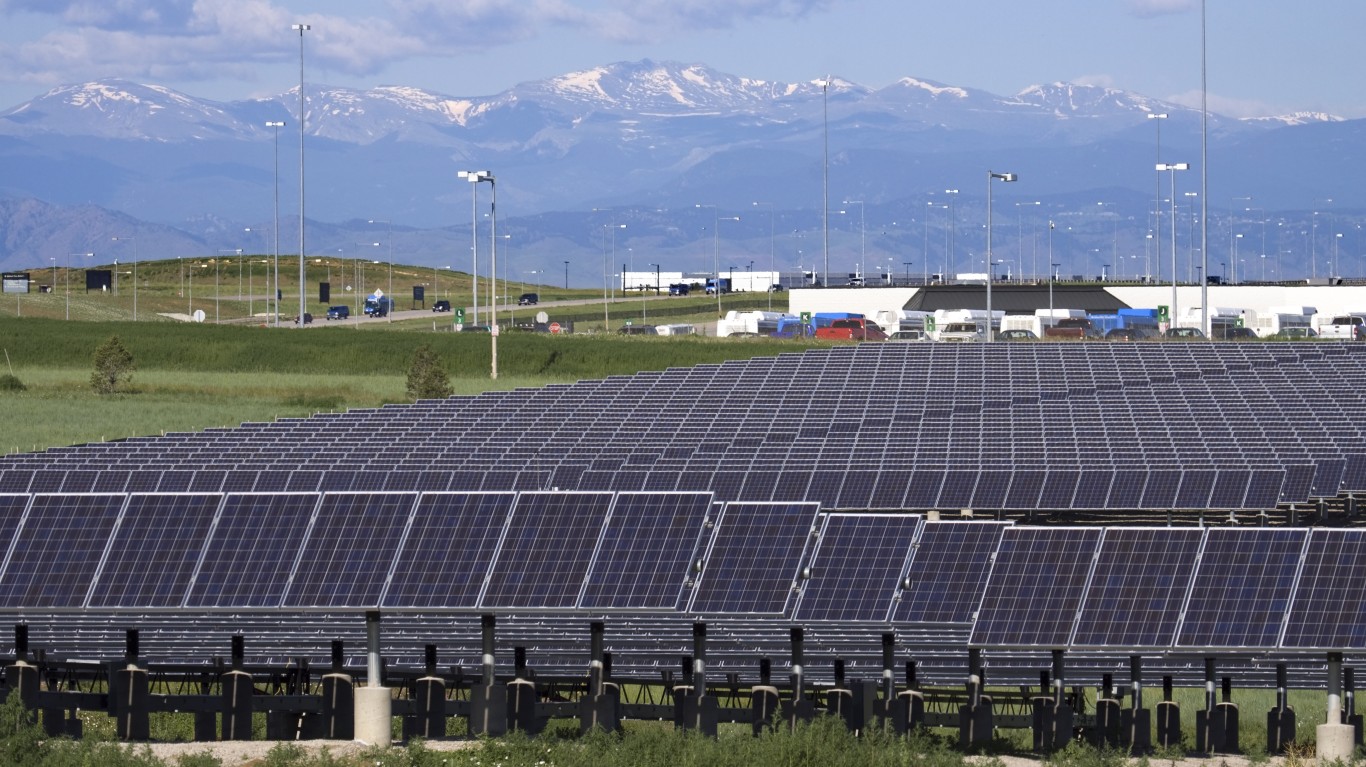
12. Colorado
> Energy generated from renewable sources: 22.9% (17th highest)
> Energy generated from fossil fuels: 77.6% (15th highest)
> Green industry employment: 20.9% (5th highest)
> Avg. daily particle pollution: 7.6 ug/m3 (6th lowest)
Colorado has one of the most environmentally friendly job markets in the country, with more than one in every five workers employed in a green industry. Additionally, 24% of workers in the state commute using environmentally sound means, like biking or walking, a larger share than in most other states. Colorado also has relatively clean air with a lower concentration of harmful particulate matter per cubic meter than all but six other states.
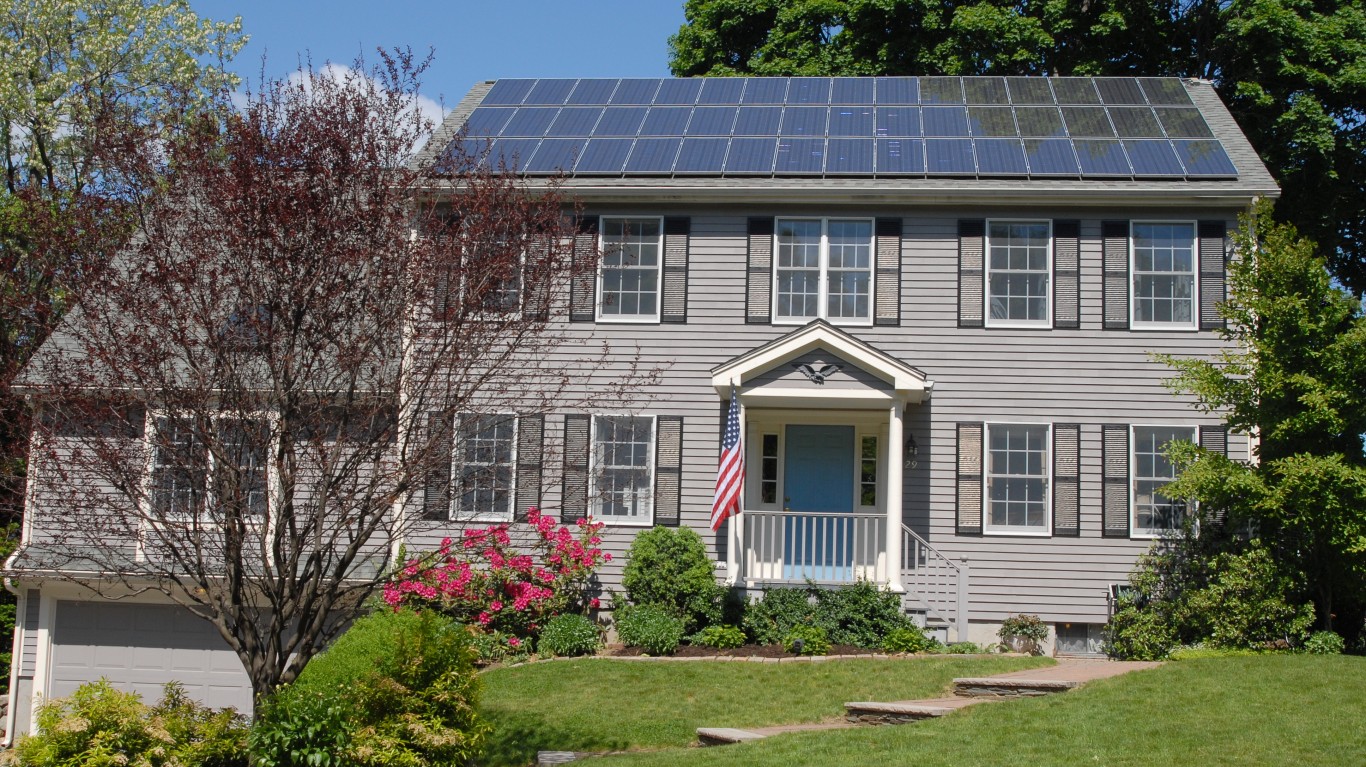
11. Connecticut
> Energy generated from renewable sources: 3.4% (6th lowest)
> Energy generated from fossil fuels: 47.3% (14th lowest)
> Green industry employment: 17.6% (21st highest)
> Avg. daily particle pollution: 8.5 ug/m3 (17th lowest)
Connecticut is now one of the 18 states that have adopted the 2015 International Energy Conservation Code (IECC). The code’s goal is to provide a model for efficiency in the buildings sector. This was the second code update in the state in the last two years.
The state’s Clean Energy Fund, a public benefits fund, raises private investment to sponsor renewable and clean energy development across Connecticut. The state is ranked by the ACEEE as having the fifth strongest set of policies related to energy efficiency.
[in-text-ad]
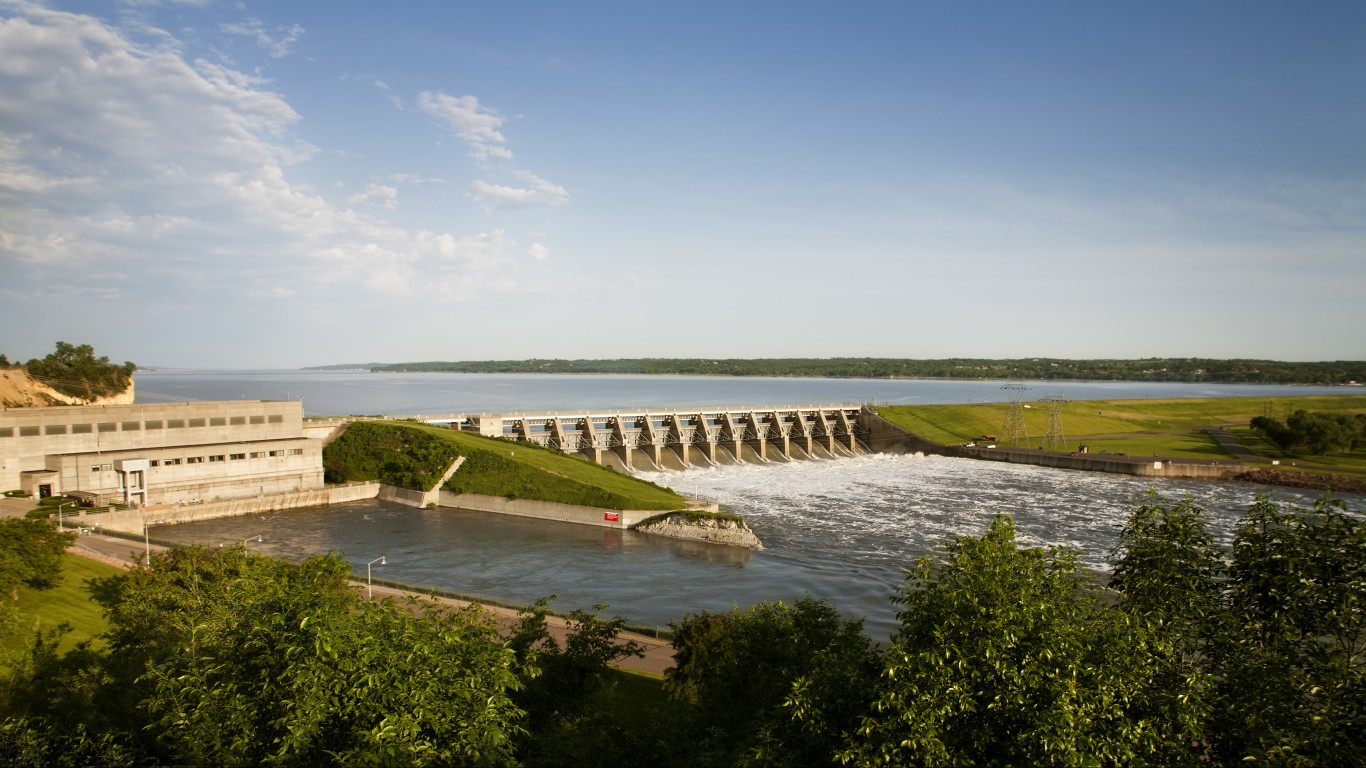
10. South Dakota
> Energy generated from renewable sources: 75.1% (4th highest)
> Energy generated from fossil fuels: 24.9% (6th lowest)
> Green industry employment: 15.3% (8th lowest)
> Avg. daily particle pollution: 8.1 ug/m3 (12th lowest)
South Dakota generates 75.1% of its electricity from renewable sources — primarily wind and hydroelectricity. Vermont, Washington, and Idaho are the only states that derive a larger share of their electricity from renewable sources. There are over 600 wind turbines in South Dakota, and four of the six major dams along the Missouri River are located in the state.
South Dakota has not always been a national leader in green energy production. Thanks in part to some public policy initiatives, electricity generated through coal in the state fell from 52% of total production to 21% over the last 10 years.
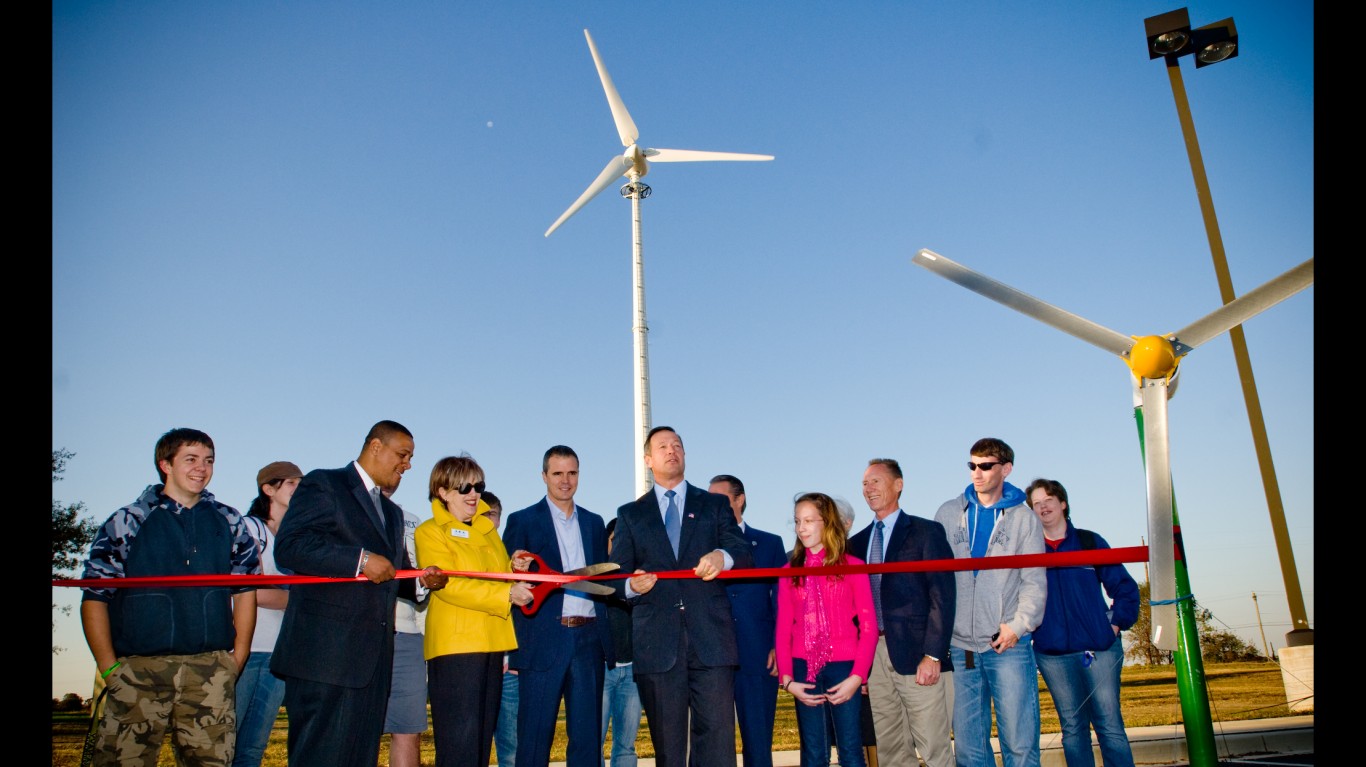
9. Maryland
> Energy generated from renewable sources: 9.8% (23rd lowest)
> Energy generated from fossil fuels: 45.0% (13th lowest)
> Green industry employment: 20.5% (7th highest)
> Avg. daily particle pollution: 10.4 ug/m3 (11th highest)
Maryland is one of only nine states where more than 20% of the labor force works in jobs that improve or minimize damage to the environment. Additionally, one in every four commuters get to work using environmentally friendly means like walking or public transit. Partially as a result, Maryland ranks among the five states with the lowest petroleum consumption rates per capita.
Nuclear power is relatively environmentally friendly as its generation produces far less greenhouse gas emissions than fossil fuels. Maryland’s Calvert Cliffs nuclear power plant accounts for 44% of the state’s energy production, and only five states rely more on nuclear power than Maryland.
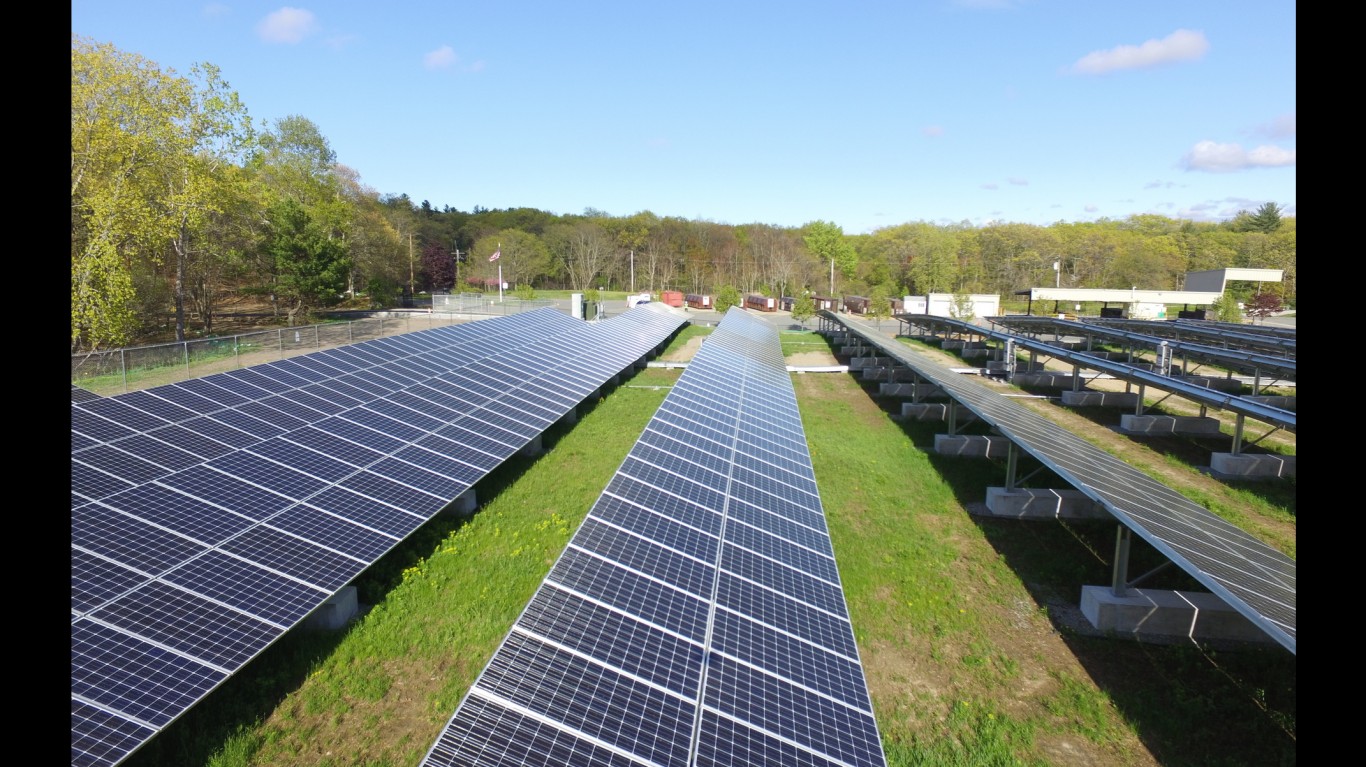
8. Massachusetts
> Energy generated from renewable sources: 10.0% (24th lowest)
> Energy generated from fossil fuels: 73.1% (19th highest)
> Green industry employment: 20.7% (6th highest)
> Avg. daily particle pollution: 9.1 ug/m3 (22nd lowest)
In the ACEEE 2018 Energy Efficiency Scorecard, Massachusetts has the highest state energy efficiency score — 44 out of 50 — of all states. The score measures policies on utility, transportation, building efficiency, combined heat and power, state government initiatives, and appliance efficiency standards.
The state’s Three-Year Energy Efficiency Plan sets a fuel-neutral savings target by 2021. About $220 million will be invested in gridside modernization technologies to improve efficiency of energy production. The state’s goal is to reduce greenhouse gas emissions by 80% by 2050.
[in-text-ad-2]

7. New York
> Energy generated from renewable sources: 28.7% (13th highest)
> Energy generated from fossil fuels: 38.0% (8th lowest)
> Green industry employment: 19.0% (10th highest)
> Avg. daily particle pollution: 9.5 ug/m3 (23rd lowest)
Though New York’s renewable energy profile is not as strong as some of the most eco-friendly states, the state ranks high for having some of the most eco-friendly energy conservation policies, according to the American Council for an Energy-Efficient Economy. In April 2018, Gov. Andrew Cuomo announced plans to accelerate the state’s green energy goals to include a 40% reduction of greenhouse gas emissions by 2030 and an 80% reduction by 2050. Part of the plan includes an announced $36.5 million in clean energy job training.
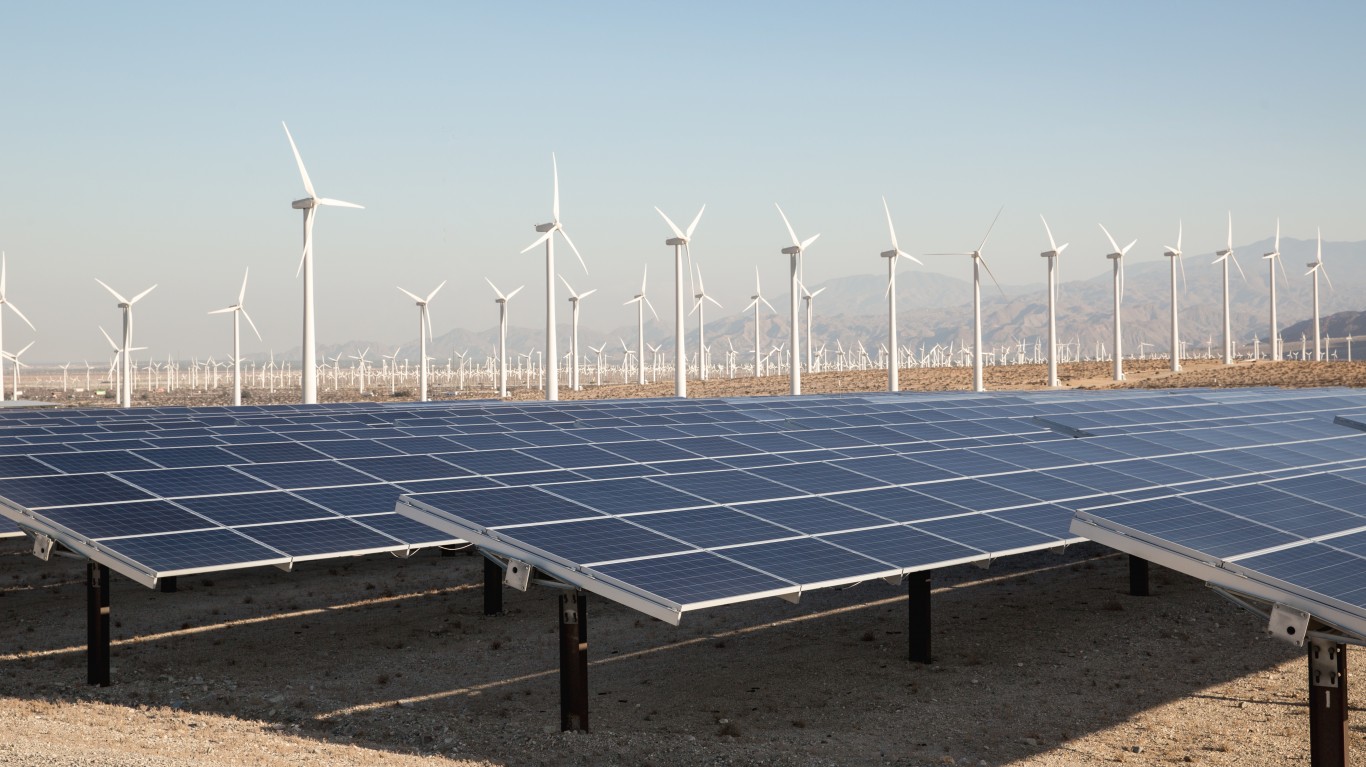
6. California
> Energy generated from renewable sources: 47.0% (7th highest)
> Energy generated from fossil fuels: 43.0% (12th lowest)
> Green industry employment: 21.5% (4th highest)
> Avg. daily particle pollution: 11.6 ug/m3 (3rd highest)
California produces more electricity from clean energy sources like solar, geothermal, and biomass than any other state. It is also the second largest producer of hydroelectricity. Indeed, green energy is a major industry in the state, as more than one in every five employees in California work in green jobs — meaning they work to benefit the environment in some way.
Programs across the state, like San Francisco’s 2007 law that requires taxi companies to reduce emissions 20% below 1990 levels, help reduce overall energy consumption. Only two states have lower energy consumption per capita than California.
[in-text-ad]
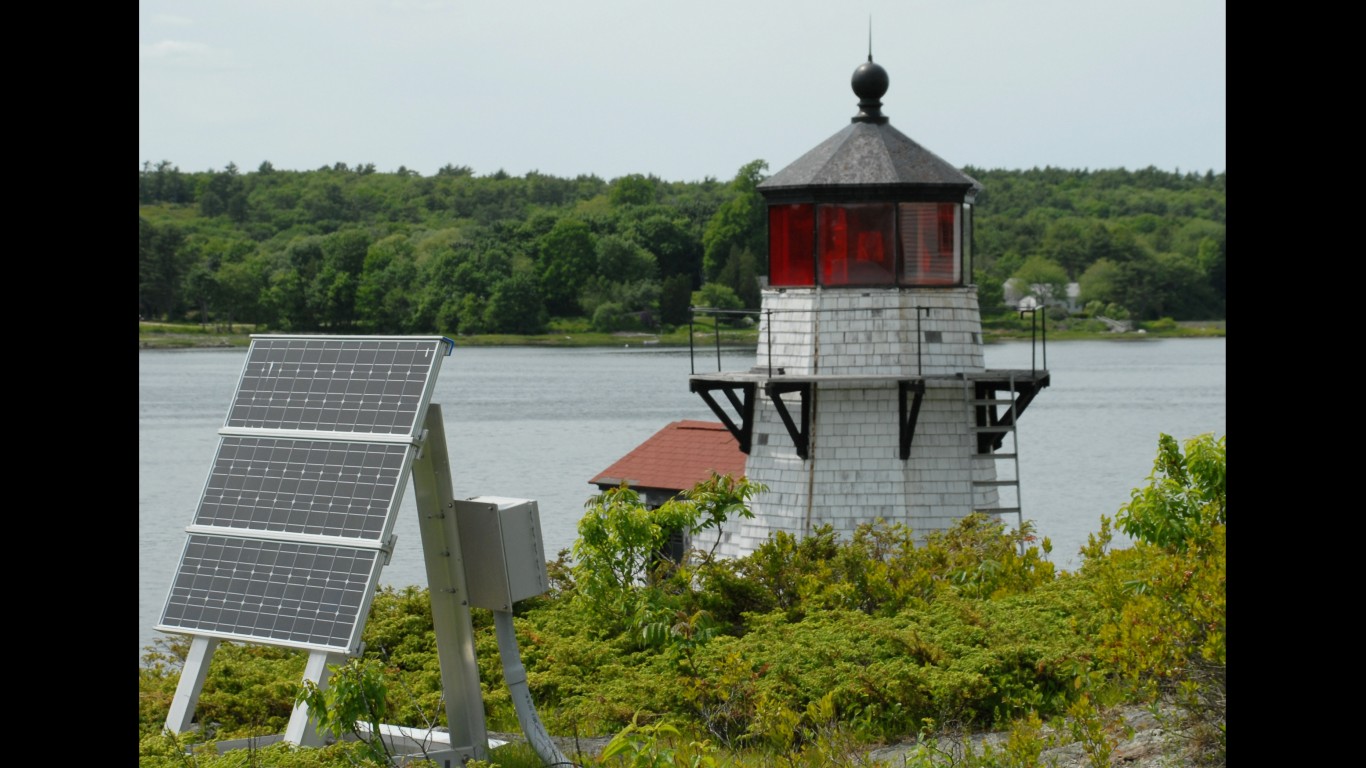
5. Maine
> Energy generated from renewable sources: 74.8% (5th highest)
> Energy generated from fossil fuels: 21.6% (4th lowest)
> Green industry employment: 17.8% (19th highest)
> Avg. daily particle pollution: 7.9 ug/m3 (8th lowest)
A national leader in green energy, Maine generates three-quarters of its electricity from renewable sources — more than all but four other states. For reference, just 17% of electricity in the United States is generated through renewable sources like wind and solar. Green energy production will likely only increase in Maine in the coming years. Voters last year elected Janet Mills governor of the state. Mills campaign promised to repeal restrictions on wind and solar energy production put in place by the previous administration.

4. Idaho
> Energy generated from renewable sources: 81.8% (2nd highest)
> Energy generated from fossil fuels: 17.8% (3rd lowest)
> Green industry employment: 20.0% (9th highest)
> Avg. daily particle pollution: 8.4 ug/m3 (16th lowest)
Idaho ranks as one of the most eco-friendly states in the country, in large part due to its energy profile. Nearly 82% of the state’s electricity generation is from renewable sources, second only to Vermont. The majority of renewable energy generated in the state comes from hydroelectric power. Just 0.1% of the state’s energy production comes from burning coal, lower than nearly any U.S. state.
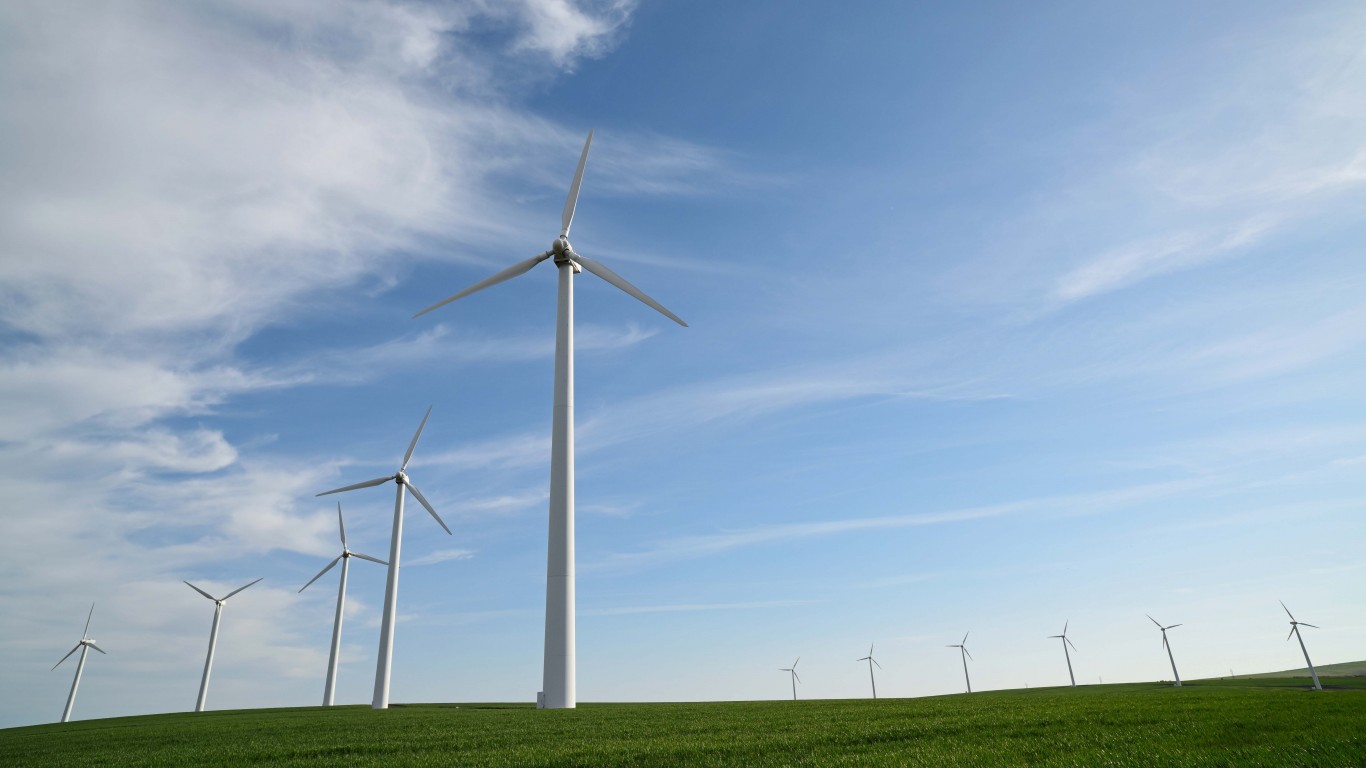
3. Oregon
> Energy generated from renewable sources: 73.1% (6th highest)
> Energy generated from fossil fuels: 26.8% (7th lowest)
> Green industry employment: 23.3% (the highest)
> Avg. daily particle pollution: 8.5 ug/m3 (18th lowest)
Oregon passed a law in 2016 that requires the state’s largest utility companies to stop paying for out-of-state coal by 2030. The law also mandates the companies to provide at least half of the electricity from renewable sources, such as the wind or sun, by 2040. As of 2017, 73.1% of the electricity in the state came from renewable sources, the sixth highest share in the country and about four times higher than the share nationwide of 17.0%.
Oregon is one of the few states in the country that have reduction targets for vehicle miles traveled. The goal is for light-duty vehicles to drive between 17.0% and 21.0% less by 2035.
[in-text-ad-2]
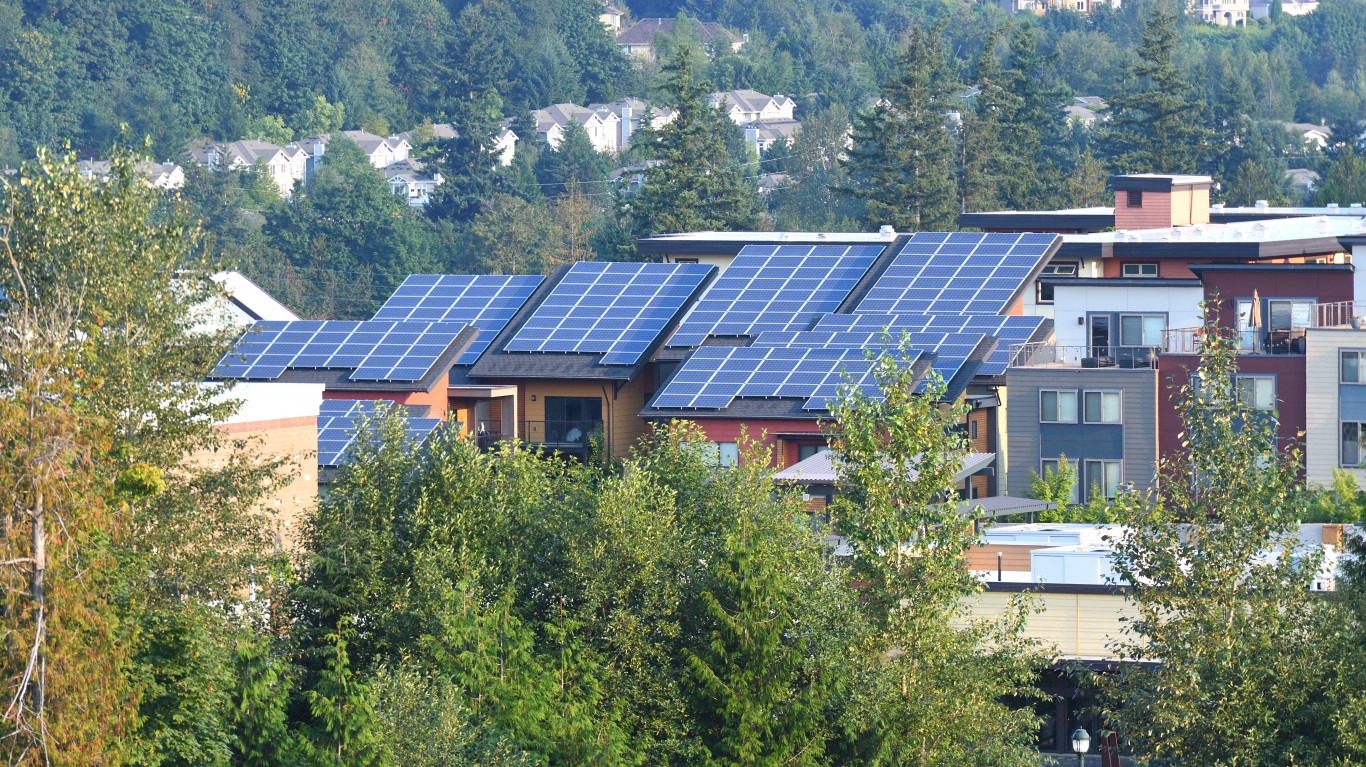
2. Washington
> Energy generated from renewable sources: 78.5% (3rd highest)
> Energy generated from fossil fuels: 14.1% (2nd lowest)
> Green industry employment: 22.9% (2nd highest)
> Avg. daily particle pollution: 8.1 ug/m3 (11th lowest)
About 23% of workers in Washington are employed in green jobs — meaning they either produce goods and services that benefit the environment or work to reduce their organization’s harmful impact on the environment. Neighboring Oregon is the only state where a larger share of workers is employed in green jobs. Washington is home to the Grand Coulee Dam, which stretches across the Columbia River and is the largest hydroelectric plant in the United States. Partially as a result, Washington accounts for about a quarter of all hydroelectricity generation in the country.
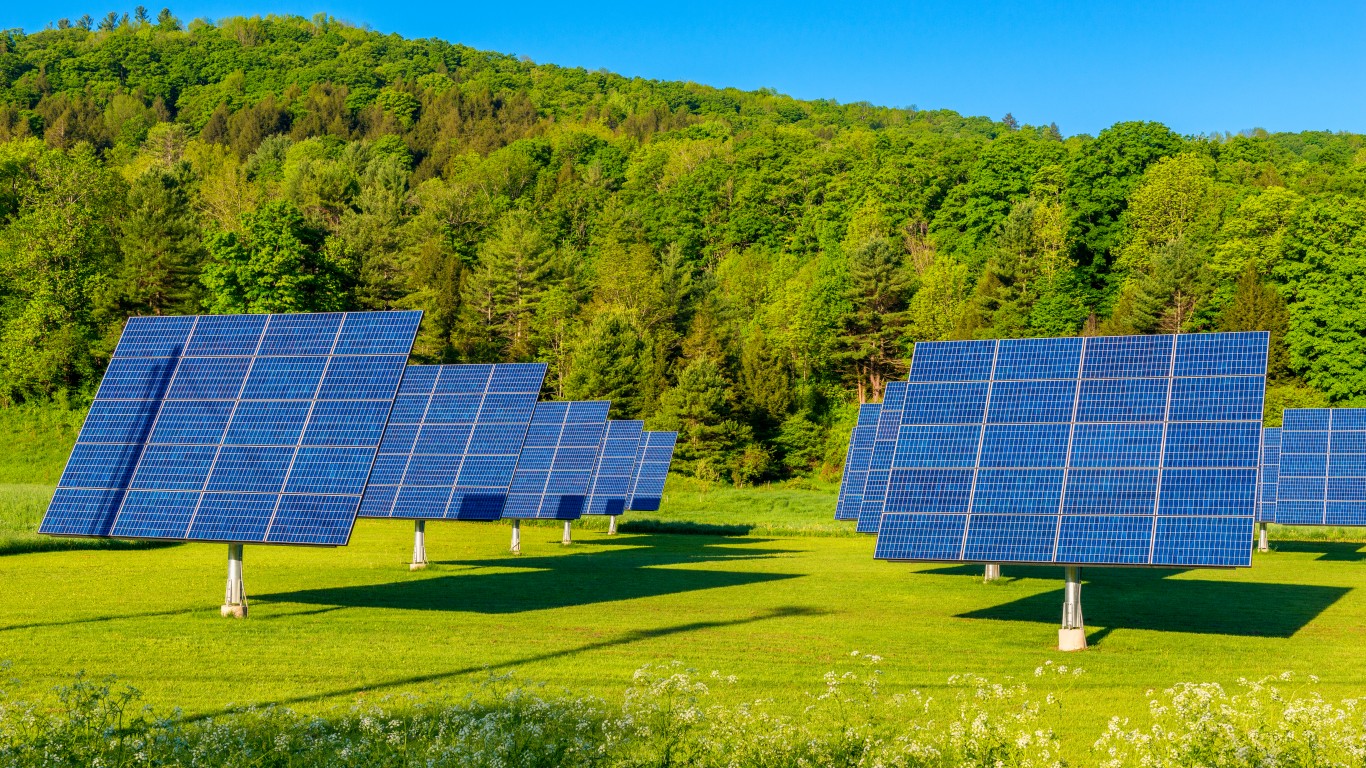
1. Vermont
> Energy generated from renewable sources: 99.6% (the highest)
> Energy generated from fossil fuels: 0.4% (the lowest)
> Green industry employment: 16.9% (18th lowest)
> Avg. daily particle pollution: 7.7 ug/m3 (7th lowest)
In 2015, Vermont became the first state to enact a renewable energy standard. The measure required that at least 75% of retail electricity would come from renewable sources by 2032.
Today, Vermont is the only state where nearly all of its generated electricity is through renewable sources.
Vermont’s shift to renewable energy has transformed the state economy as jobs in solar panel installation are about 19 times more common in the state than they are nationwide. While solar is a significant source of electricity in Vermont, the bulk of renewable energy is hydroelectric.
Methodology:
To determine the most eco-friendly states, 24/7 Wall St. created an index of measures of energy use and pollution. States ranked as more eco-friendly if a larger share of electricity generated in the state comes from renewable sources, if the state has a relatively strict set of policies related to energy efficiency, if air pollution levels are relatively low, and if a relatively high share of jobs are in industries determined to be green. States were penalized for having a high share of total electricity generation from oil, coal, or natural gas combustion.
Average daily density of fine particulate matter is measured in micrograms per cubic meter and is from County Health Rankings & Roadmaps, a Robert Wood Johnson Foundation and University of Wisconsin Population Health Institute joint program, and is for 2014. Electricity generation by source is for 2017 and comes from the U.S. Energy Information Administration.
The share of jobs in green industry employment by state comes from the U.S. Bureau of Labor Statistics’ Quarterly Census of Employment and Wages, and is for 2017.
Each state’s energy efficiency policy score rank in the index came from the American Council for an Energy-Efficient Economy’s 2018 State Energy Efficiency Scorecard, which measures state and regional policy on transportation, utility, buildings, and other energy efficiency standards.
Start by taking a quick retirement quiz from SmartAsset that will match you with up to 3 financial advisors that serve your area and beyond in 5 minutes, or less.
Each advisor has been vetted by SmartAsset and is held to a fiduciary standard to act in your best interests.
Here’s how it works:
1. Answer SmartAsset advisor match quiz
2. Review your pre-screened matches at your leisure. Check out the advisors’ profiles.
3. Speak with advisors at no cost to you. Have an introductory call on the phone or introduction in person and choose whom to work with in the future
Thank you for reading! Have some feedback for us?
Contact the 24/7 Wall St. editorial team.